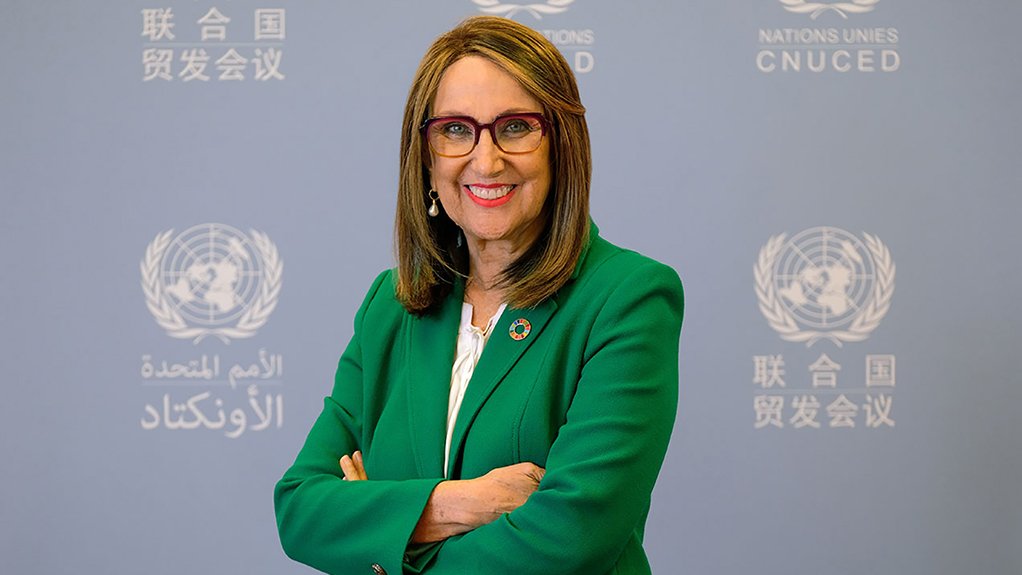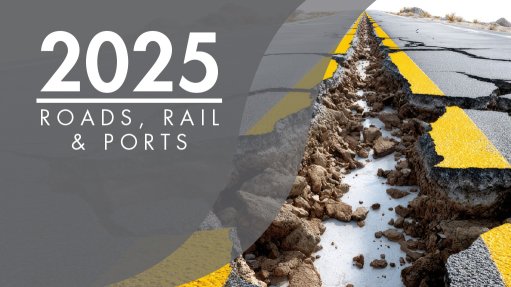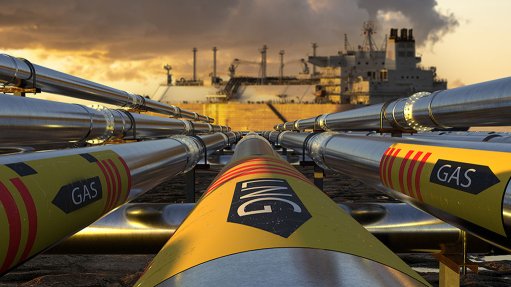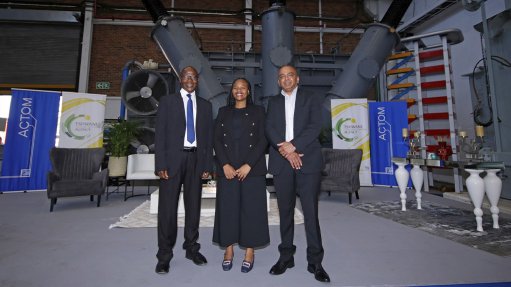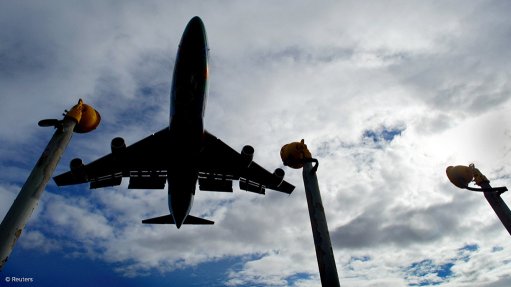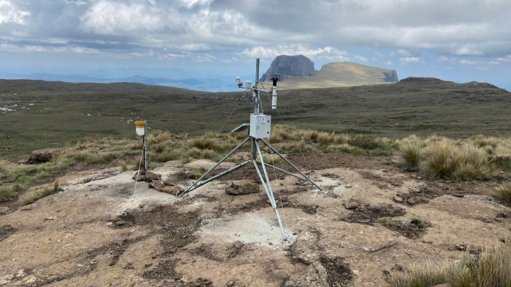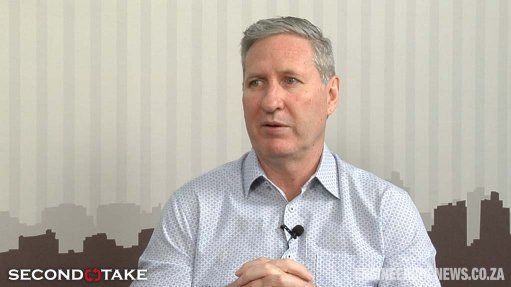FDI flows into Africa rose by 75% to $97bn in 2024, Unctad report shows
The latest ‘World Investment Report’ from UN Trade and Development (Unctad) highlights a significant rebound in foreign direct investment (FDI) inflows to Africa.
In 2024, foreign investment in the continent rose sharply by 75% to reach $97-billion, representing 6% of global FDI, compared with a 4% share the year before, the report shows.
According to the report, which was published on June 19, the surge was largely driven by an international project finance deal for urban development in Egypt. Net of this increase, FDI in Africa still rose 12% to about $62-billion, comprising 4% of global inflows.
Investment facilitation efforts continued to feature prominently in Africa, accounting for 36% of policy measures favourable to investors. Liberalisation also remained a key component of investment policymaking in both Africa and Asia, representing one fifth of all investment policy measures adopted in 2024.
The report showed that European investors held the largest FDI stock in Africa, followed by the US and China. China’s investment, valued at $42-billion, was increasingly directed toward sectors such as pharmaceuticals and food processing.
One-third of all projects associated with the Belt and Road Initiative, a global development initiative promoted by China, were focused on social infrastructure and renewable energy.
In 2024, foreign investment increased across most regions of Africa, with North Africa recording the strongest performance. In addition to the significant growth in Egypt, FDI in Tunisia rose by 21% to $936-million, while Morocco experienced a 55% increase to reach $1.6-billion.
Across the continent, the value of international project finance (IPF) deals rose by 15%, driven by large-scale energy and transport infrastructure projects. Egypt saw more than a doubling in its IPF commitments. Despite the rise in value, the number of international project finance deals across Africa declined by 3%.
Renewable energy was the only sector to record notable growth in project numbers, with seven major deals valued at about $17-billion. These included offshore power cables and wind and solar power installations, primarily in Egypt, but also in Tunisia, Morocco and Namibia.
In contrast, greenfield investments in Africa declined. Greenfield investment announcements dropped by 5%, and their total value fell by 37%, down to $113-billion from $178-billion in 2023.
Most countries on the continent experienced a decrease in greenfield investment activity, with the exception of North Africa. There, greenfield investments increased by 12% to $76-billion, accounting for two-thirds of the total capital expenditures for such projects in Africa.
In terms of sectors, construction and metal products recorded the largest increases in greenfield investment, while electricity and gas supply projects experienced a significant decline, falling by $51-billion.
Cross-border mergers and acquisitions, which typically account for about 15% of Africa’s FDI inflows, turned negative in 2024.
GLOBAL INVESTMENT TRENDS
Global FDI fell by 11% in 2024, marking the second consecutive year of decline and confirming a deepening slowdown in productive capital flows, according to the report.
Although the global total rose by 4% to $1.5-trillion, the increase was attributed primarily to volatile financial conduit flows through several European economies, which often serve as intermediate channels for cross-border investments. These flows do not necessarily translate into new productive assets, thus masking the overall decline in genuine investment activity.
This year’s report has been released ahead of the Fourth International Conference on Financing for Development (FFD4), where global leaders are expected to address the growing disconnect between international capital flows and development financing needs.
The findings in the report emphasised the urgency of reforming investment and finance systems to better support inclusive and sustainable economic growth.
The global decline in FDI was driven largely by a 22% decrease in inflows to developed economies, including a 58% reduction in Europe. In contrast, North America recorded a 23% increase, led by the US.
In developing countries, overall FDI inflows appeared broadly stable. However, the report noted this stability concealed deeper structural issues. Many economies continued to see capital stagnate or entirely bypass sectors that are critical for long-term development, such as infrastructure, energy, technology and industries central to job creation.
“Too many economies are being left behind not for lack of potential – but because the system still sends capital where it’s easiest, not where it’s needed. But we can change that. If we align public and private investment with development goals and build trust into the system, domestic and international markets will bring scale, stability and predictability, and today’s volatility can become tomorrow’s opportunity,” Unctad secretary-general Rebeca Grynspan said.
According to the report, the 2024 investment landscape was shaped by a combination of geopolitical tensions, trade fragmentation, and intensifying competition through industrial policies.
Elevated financial risks and ongoing uncertainty contributed to the erosion of long-term investor confidence. As a result, multinational corporations increasingly prioritised short-term risk mitigation over long-term investment strategies, especially in sectors sensitive to national security, supply chain restructuring, and shifting global trade dynamics.
In developing regions, FDI patterns varied significantly. Asia remained the largest recipient of foreign investment, despite a modest 3% decline. Southeast Asian countries, in particular, saw a 10% rise in inflows to $225-billion, which marked the second-highest level on record for the subregion.
Latin America and the Caribbean experienced a 12% decline in overall FDI, though greenfield investment announcements increased in key countries such as Argentina, Brazil and Mexico. The Middle East maintained strong investment levels, supported by ongoing efforts to diversify Gulf economies away from oil dependency.
Among structurally vulnerable economies, results were mixed. FDI inflows increased by 9% in least developed countries and by 14% in small island developing States.
However, landlocked developing countries saw a 10% decline. In all three groups, foreign investment remained highly concentrated in a small number of countries, highlighting persistent inequalities in global capital distribution.
Investment in development-critical sectors showed further signs of decline. Although greenfield investment values held steady overall, international project finance – often crucial for infrastructure – fell by 26% in 2024. The contraction was particularly severe in sectors central to achieving the Sustainable Development Goals (SDGs), including renewable energy (down 31%), transport (down 32%) and water and sanitation (down 30%).
FDI in the digital economy grew by 14%, with the expansion led by information and communication technology manufacturing, digital services, and semiconductor industries. However, this growth remained heavily concentrated in a limited number of economies.
Ten countries accounted for 80% of all new digital projects. Many developing countries remained excluded from this expansion owing to enduring infrastructure, regulatory, and skills-related barriers.
The report warned that current levels of investment are significantly below global development needs. Closing the SDG financing gap alone would require an estimated $4-trillion per year in developing countries, a target that is becoming increasingly out of reach under present conditions.
To reverse the downturn, Unctad called for not only increased capital flows but also more effective and strategic deployment of capital. It advocated for long-term, inclusive investment that aligns with sustainable development objectives.
In particular, the report stressed the urgency of bridging the global digital divide, as digital industries represent one of the most transformative sectors for future growth.
Unctad proposed a multi-stakeholder agenda to support developing countries in attracting transformative FDI in the digital economy.
The agenda includes seven priority areas:
- Improving data and AI governance to guide effective digital strategies;
- Developing policy toolkits tailored to digital investment in developing contexts;
- Advancing global rules for digital trade and investment through multilateral engagement;
- Strengthening digital infrastructure through global partnerships and blended finance;
- Fostering innovation ecosystems through university-industry collaboration;
- Enhancing digital skills through targeted education, training and entrepreneurship; and
- Promoting responsible digital investment by managing risks and enforcing sustainability standards.
According to the report, reshaping the global rules and incentives that guide capital flows will be essential to unlocking development opportunities, closing the digital divide, and converting today’s global investment volatility into a foundation for inclusive and sustainable growth.
Article Enquiry
Email Article
Save Article
Feedback
To advertise email advertising@creamermedia.co.za or click here
Comments
Press Office
Announcements
What's On
Subscribe to improve your user experience...
Option 1 (equivalent of R125 a month):
Receive a weekly copy of Creamer Media's Engineering News & Mining Weekly magazine
(print copy for those in South Africa and e-magazine for those outside of South Africa)
Receive daily email newsletters
Access to full search results
Access archive of magazine back copies
Access to Projects in Progress
Access to ONE Research Report of your choice in PDF format
Option 2 (equivalent of R375 a month):
All benefits from Option 1
PLUS
Access to Creamer Media's Research Channel Africa for ALL Research Reports, in PDF format, on various industrial and mining sectors
including Electricity; Water; Energy Transition; Hydrogen; Roads, Rail and Ports; Coal; Gold; Platinum; Battery Metals; etc.
Already a subscriber?
Forgotten your password?
Receive weekly copy of Creamer Media's Engineering News & Mining Weekly magazine (print copy for those in South Africa and e-magazine for those outside of South Africa)
➕
Recieve daily email newsletters
➕
Access to full search results
➕
Access archive of magazine back copies
➕
Access to Projects in Progress
➕
Access to ONE Research Report of your choice in PDF format
RESEARCH CHANNEL AFRICA
R4500 (equivalent of R375 a month)
SUBSCRIBEAll benefits from Option 1
➕
Access to Creamer Media's Research Channel Africa for ALL Research Reports on various industrial and mining sectors, in PDF format, including on:
Electricity
➕
Water
➕
Energy Transition
➕
Hydrogen
➕
Roads, Rail and Ports
➕
Coal
➕
Gold
➕
Platinum
➕
Battery Metals
➕
etc.
Receive all benefits from Option 1 or Option 2 delivered to numerous people at your company
➕
Multiple User names and Passwords for simultaneous log-ins
➕
Intranet integration access to all in your organisation



